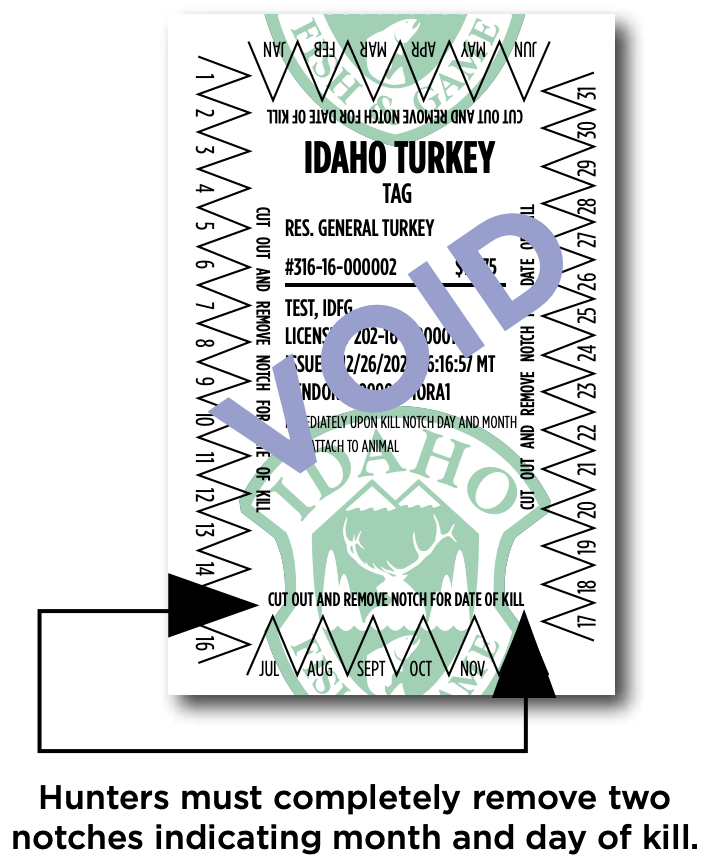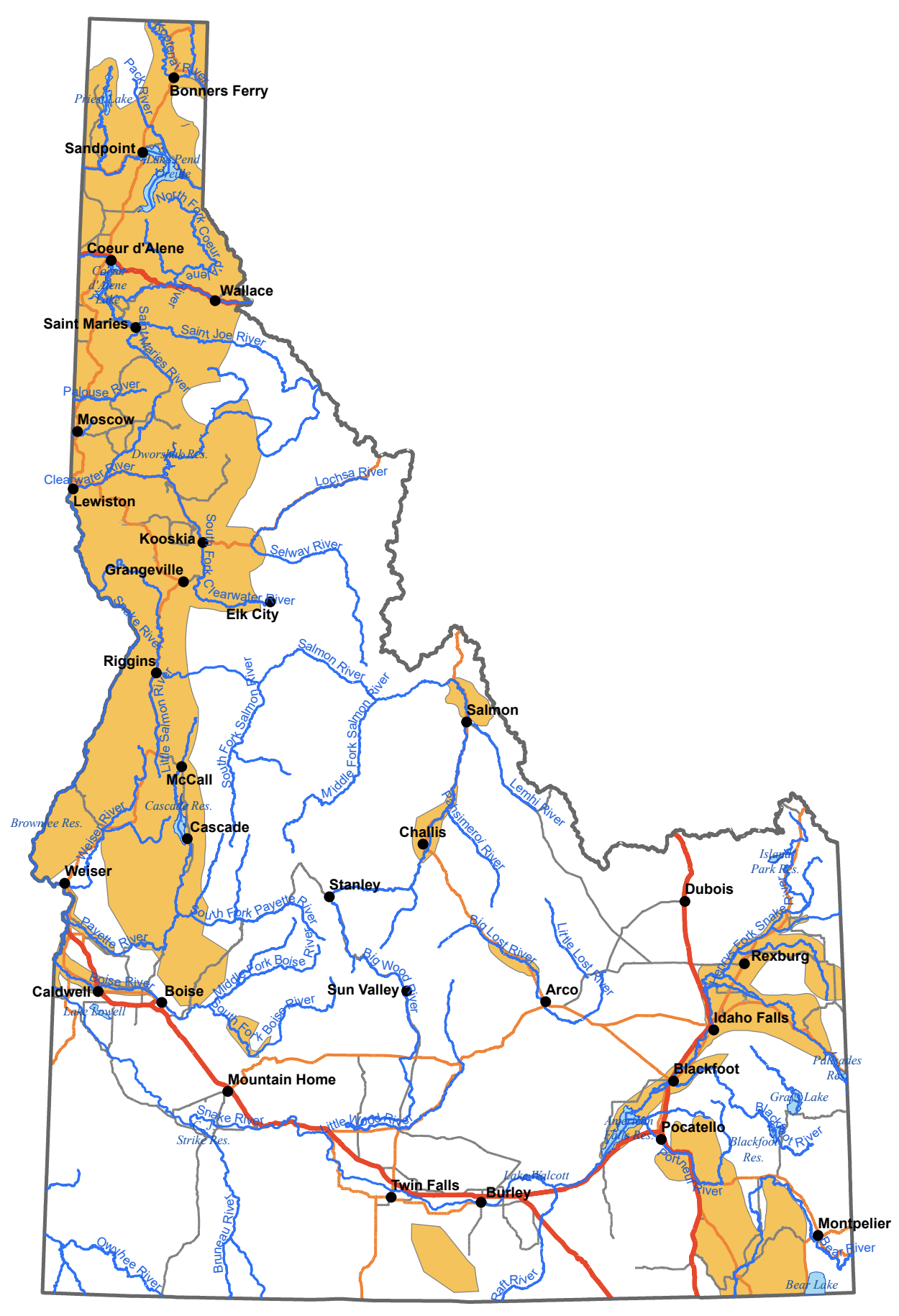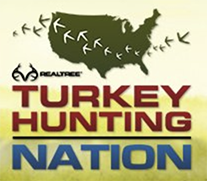Turkey Hunting Regulations
Youth Hunts for Turkeys
A hunter must be 10 to 17 years of age to hunt in a general season youth hunt.
Hunting Passport holders who are 8 or 9 years of age may purchase turkey tags to participate in the following turkey hunts: general season, general youth-only, depredation, and landowner permission hunts with the appropriate landowner permission permit. Hunting Passport holders are not eligible to participate in controlled hunts.
A person applying for a youth only controlled hunt must be 10-17 years of age during the hunt for which they are applying, but they may not hunt until they are 10 years of age.
A 9-year old may purchase a junior hunting license and then purchase a turkey tag and/or apply for a controlled turkey hunt, but they may not hunt until they are 10 years of age.
Resident junior hunters under 12 must be accompanied by a licensed adult 18 years of age or older who must be close enough to be within normal conversation or hearing range without shouting or the aid of electronic devices.
Nonresident junior mentored hunters under 18 must be accompanied by a licensed adult 18 years of age or older close enough to be within normal conversation or hearing range without shouting or the aid of electronic devices.
Tag Requirements
No person may hunt wild turkey without having in his or her possession the appropriate hunting license and tag.
There are two types of turkey tags available: general hunt tags and controlled hunt tags.
General hunt tags are valid for spring and fall general seasons. If a general hunt tag is not used to harvest a turkey during the spring season, it may be used in a fall season. Controlled hunt tags are valid in the controlled hunt for which a hunter was drawn or in any open general season hunt during the same calendar year.
Some general tags are discounted:
For residents, second or subsequent tags purchased in a calendar year following the first full-price general or controlled hunt tag purchase are discounted. Fees are $12.25, including the vendor issuance fee. Three (3) general season tags can be purchased in a calendar year.
Special Unit tags are general tags for use in units 1, 2, 3, 4, 4A, 5, 6, 7, and 9 during fall general seasons, and in designated depredation hunts. Fees are $5, including the vendor issuance fee. Three (3) special unit tags can be purchased in a calendar year (not including special unit tags purchased for a depredation hunt).
Controlled Hunt Permit Requirements
No person may hunt wild turkey in a controlled hunt or landowner permission hunt (see below) without having in his or her possession the appropriate hunting license and controlled hunt tag.
Landowner Permission Hunts (LPH)
These are a form of depredation hunt. Do not apply for these hunts during the controlled hunt application period. LPH forms (a triplicate form provided by Fish and Game) are provided to landowners prior to the season or upon verifying a depredation problem that cannot be resolved by non-lethal means. Landowners can then provide permission to hunters. Landowners and hunters must fill out and sign their respective portions of the forms. Hunters must provide one copy of the form to the landowner, and bring the remaining two signed copies to a Fish and Game office to purchase their controlled hunt tag. Spring hunts may be purchased after April 1, and fall hunts may be purchased after July 15.
QUICK TAG OVERVIEW |
|
If You Want to Hunt... |
Buy a License AND a... |
General Season, Spring Turkey |
General Turkey Tag (including special unit tags valid only in units 1, 2, 3, 4, 4A, 5, 6, 7, and 9) |
General Season Fall Turkey |
Apply for a Controlled Hunt Tag February 1 – March 1 and use a Controlled Hunt Tag. Any leftover tags go on sale March 25 at 10:00AM MDT |
Controlled Hunt, Spring Season |
Apply for a Controlled Hunt Tag February 1 – March 1 and use a Controlled Hunt Tag. Any leftover tags go on sale March 25 at 10:00AM MDT |
Controlled Hunt, Fall Season |
Apply for a Controlled Hunt Tag May 1 – June 5 and use a Controlled Hunt Tag. Any leftover tags go on sale July 15 at 10:00AM MDT |
Landowner Permission Hunt |
Obtain a signed Landowner Permission Hunt form from the property owner, and purchase a Controlled Hunt Tag at a Regional Office |
*Controlled hunt tags are valid in the controlled hunt for which a hunter was drawn or in any general season hunt during the same calendar year.
Spring and fall LPH tags are valid only for specific areas and seasons as designated by hunt number. A turkey hunter must have an LPH form and controlled hunt tag to hunt in a spring or fall landowner permission hunt. A turkey hunter may only harvest one bird per LPH tag.
Controlled Hunts
Eligibility: Holders of valid hunting licenses are eligible to apply for controlled hunts subject to the following restrictions:
- Holders of a Nongame Hunting License, Hunting Passport, or a Three-Day Nonresident Small Game License may not apply for any controlled hunt.
Application Dates:
- Spring hunt application period: February 1 – March 1. Results available by March 20. Any left over tags go on
sale March 25 at 10:00am MDT. - Fall hunt application period: May 1 – June 5. Results available by July 10. Any leftover tags go on sale July 15 at
10:00am MDT.
- Only one application per person or group will be accepted. Additional applications will result in all applications being declared ineligible. For example, if John Smith submits a controlled hunt application for turkey, and then Bob Smith submits a group application for himself and John Smith, both applications for John will be declared ineligible as well as Bob’s application.
- Each applicant for controlled hunts must submit a $6.25 ($18 for nonresidents) nonrefundable application fee with their application.
- During the application period, Visa, MasterCard and Discover cards may be used to make telephone applications or online through Fish and Game’s website. Those using the credit card system will pay a processing fee (Phone: three percent plus $5.50; Online: three percent plus $3.50) in addition to the nonrefundable application fee. To apply by credit card, dial 1-800-554-8685, 24-hours a day, or use the Fish and Game website.
Group Application: Two hunters applying for the same controlled hunt on the same application.
Refunds Of Controlled Hunt Fee: Hunting license fees will not be refunded to unsuccessful applicants. Application fees for controlled hunts are not refundable.
Second Choice Drawing: Single or group applications which are not drawn for the first choice hunt will automatically be entered into a second choice drawing provided the second choice hunt applied for has not been filled.
Notification: It is the applicant's responsibility to find out if they were successful in the controlled hunt drawing. Results for spring seasons will be available by March 20 on the Fish and Game website. Fish and Game will mail a postcard notification to all successful applicants by March 20. Results for fall seasons will be available by July 10.
Nonresident Tag Limitations: No more than 10 percent of controlled hunt tags may be issued to nonresidents.
Unfilled (Leftover) Controlled Hunt Tags: Any spring controlled hunt tags for turkey that remain unsold after controlled hunt drawings may be sold on a first-come, first-served basis on or after March 25 at 10:00am MDT. Unsold fall controlled hunt tags will go on sale July 15 at 10:00am MDT. Hunters 65 years of age or older or hunters with a senior combination hunting license or a disabled hunting license may apply for first-come, first-served leftover youth-only controlled hunt tags. Controlled hunt tags will be issued to successful applicants. The 10 percent nonresident limitation shall not apply.
Permit Designation to Child or Grandchild: A holder of a controlled hunt tag for turkey may designate that tag to the holders child or grandchild (under the age of 18) who is otherwise qualified to participate in the hunt. The child or grandchild may be designated only one controlled hunt tag for turkey per calendar year. The designation must be made before the opening date of the hunt. Resident adults can only designate tags to resident youth; nonresident adults can only designate tags to nonresident youth. For more information and a form to designate the tag, please contact your nearest Fish and Game office or visit the licensing section of Fish and Game’s website.
Tag Validation and Attachment
Immediately after any wild turkey is killed, a turkey tag must be validated and securely attached to the bird.
To validate the tag, the hunter must cut out and completely remove two triangles on the border of the tag, one for the month and one for the day of the kill.
The tag must remain attached as long as the turkey is in transit or storage.

Unlawful Methods of Take
No person may take turkey:
- Outside of legal shooting hours.
- With lead shot exceeding BB size or steel shot exceeding T size.
- By use of dogs, except during fall hunts.
- With a trap, snare, net, crossbow or firearms; Except turkeys may be taken with a shotgun using shells not exceeding 3 1⁄2 inches maximum length, or muzzleloading shotgun.
- From any watercraft.
- By the use or aid of any electronic call.
- By the aid of baiting. Bait is defined as any substance placed to attract game.
- With any airgun using pre-charged pneumatic power to propel a projectile (including shot and arrows) with unignited compressed air or gas and projectiles less than thirty (.30) caliber.
NOTE: The Fish and Game Commission has proposed a rule change to allow the take of upland game birds (including turkey) with a crossbow. This proposed change does not take effect until reviewed by the 2022 Idaho Legislature. Before going afield with a crossbow, please check the Idaho Fish
& Game website to see whether crossbows are allowed for upland game bird hunting.
Shooting Hours
Shooting hours are from one-half hour before sunrise to sunset.
Species Identification
The beard or leg of a wild turkey must be left naturally attached to the carcass while being transported.
Daily Bag and Season Limits
Daily Bag Limit: The maximum number of turkeys that may be legally taken, caught or killed by any one (1) person during a calendar day:
• During spring seasons the daily bag limit is two (2) male turkeys. A legal turkey is a male turkey or a turkey with a visible beard.
• During fall seasons the daily bag limit is equal to the number of valid tags possessed. Either sex turkeys may be taken during fall seasons.
Season Limit: The maximum number of turkeys that may be legally taken, caught or killed by any one (1) person during a season:
• During spring seasons only two (2) male turkeys may be taken using a general or controlled hunt tag before May 26. A legal turkey is a male turkey or a turkey with a visible beard.
• During fall seasons a hunter may harvest as many turkeys for which they have legal tags in that calendar year.
• Note: Any tags purchased and filled during the January 1 – 31 season will count against the tags available for subsequent spring and fall seasons.
WILD TURKEY DISTRIBUTION
Shaded areas indicate general wild turkey distribution in Idaho.
Wild turkeys are not native to Idaho, but were first transplanted here in 1961. Since then, more than 150 translocation efforts have been conducted statewide.
Three turkey subspecies have been introduced to Idaho. More than 90 percent are the Merriam’s wild turkey (Meleagris gallopavo merriami). Others are the Rio Grande wild turkey (M.g. intermedia), and the Eastern wild turkey (M.g silvestris).
The Merriam’s wild turkey was the first subspecies introduced to Idaho, and it has been by far the most successful. This bird is widely distributed in the mountains of the Panhandle, Clearwater, and Southwest regions.
The Rio Grande wild turkey was first introduced to Idaho in 1982. This subspecies is present in small numbers in riparian areas adjacent to the Snake, Boise, Payette, and Weiser rivers.
The Eastern wild turkey has been introduced to a few sites near Dworshak Reservoir, and some birds may still be found there.
Hybrids occur in many areas of the state.


